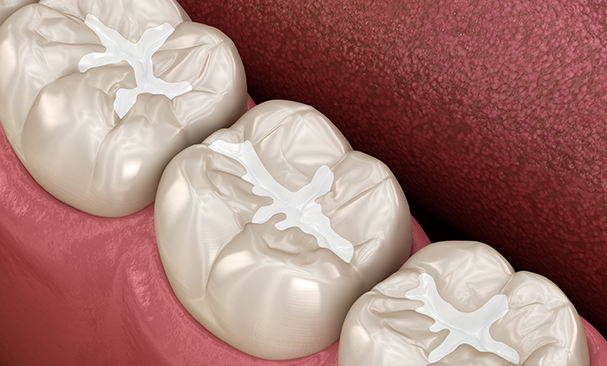
How Do Sealants Work?
Think of dental sealants as raincoats for your teeth. Just as a raincoat keeps you dry during a storm, sealants protect your teeth by blocking out food particles and bacteria that can cause cavities. By forming a protective barrier, sealants prevent acids from creating holes in your teeth, keeping them clean and healthy.
Who Can Get Sealants?
Both children and adults can benefit from dental sealants, but applying them early is most effective. First molars typically emerge around age 6, and second molars around age 12. Applying sealants as soon as these teeth come in can help keep them cavity-free from the start, saving you time and money in the long run. Ask us if sealants are a good choice for you and your family.
How Are Sealants Applied?
The application of dental sealants is quick and painless. We start by cleaning and drying your tooth, then apply an acidic gel that roughens the tooth surface for a better bond with the sealant. After rinsing off the gel and drying the tooth again, we apply the sealant to the grooves and use a special blue light to harden it.
Can Sealants Be Placed Over Cavities?
Sealants can also be applied to areas of early decay to prevent further damage. Since some sealants are clear, your dentist can monitor the tooth to ensure the sealant is effectively protecting it.
Are There Any Side Effects?
Aside from potential allergies, there are no known side effects associated with dental sealants.
Is There BPA In Sealants?
Yes, dental sealants contain a very small amount of BPA, but it's not enough to pose any harm. In fact, you’re exposed to more BPA from everyday activities like handling receipts, using cosmetics, or coming into contact with dust.
How Long Do Sealants Last?
Sealants typically last for several years before needing reapplication. During your regular dental visits, we'll assess the condition of your sealants and reapply them if necessary.
